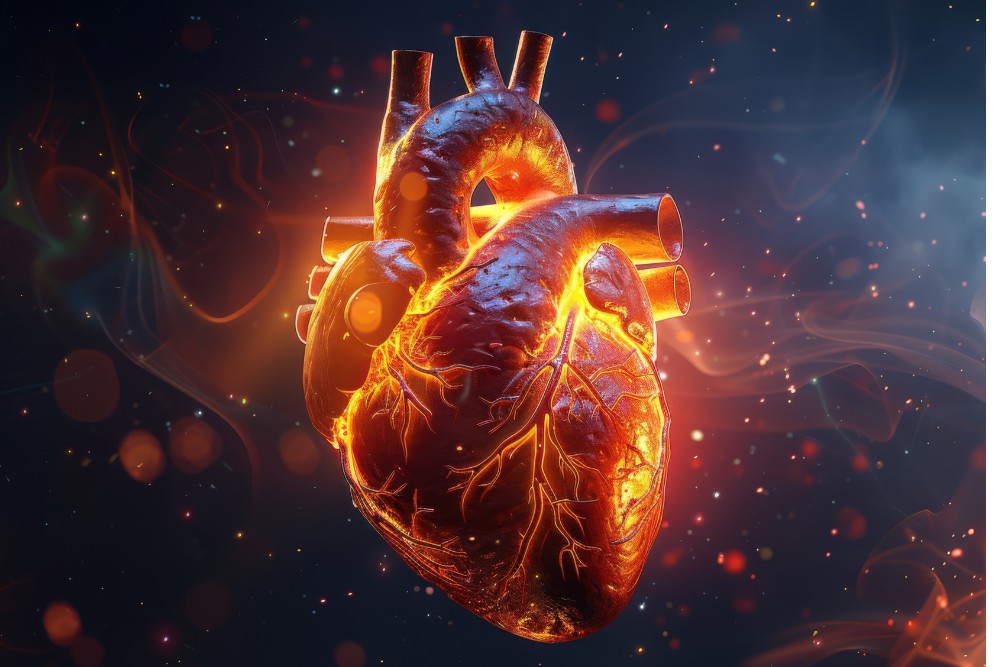Differences Between Ischemic and Non-Ischemic Heart Issues

Cardiac ischemia is when the heart muscle doesn’t receive enough blood due to artery blockages. However, not all heart problems stem from ischemia. Some heart conditions fall under non-ischemic cardiomyopathy, meaning they are not caused by blocked arteries but by other factors like genetics, infections, or structural abnormalities.
Understanding the difference between ischemic and non-ischemic heart conditions is crucial for proper diagnosis and treatment.
Non-ischemic vs. Ischemic Heart Issues
The main difference between ischemic and non-ischemic heart diseases lies in their causes:
- Ischemic heart disease (IHD): Caused by narrowed or blocked arteries that reduce blood flow to the heart. This condition often results from atherosclerosis (plaque buildup in the arteries).
- Non-ischemic heart conditions: These aren’t caused by blockages but may result from infections, inflammation, genetic disorders, metabolic issues, or high blood pressure.
Both conditions can lead to heart failure, but their treatments and risk factors differ significantly.
Types of Ischemic Heart Disease
Ischemic heart disease (IHD), also known as coronary artery disease (CAD), manifests in different forms:
- Stable Angina: Chest pain occurs predictably during exertion and goes away with rest.
- Unstable Angina: Chest pain occurs unpredictably, even at rest, and may indicate an impending heart attack.
- Myocardial Infarction (Heart Attack): A complete blockage of a coronary artery leads to permanent heart muscle damage.
- Silent Ischemia: Lack of blood flow occurs without noticeable symptoms, making it dangerous as it may go undetected.
How Long Can You Live with Ischemic Heart Disease?
Life expectancy with ischemic heart disease depends on disease severity, management, and lifestyle changes. Some key factors include:
- Mild to moderate cases: With proper treatment (medications, diet, exercise, and lifestyle changes), many individuals live for decades.
- Severe cases: If left untreated, complications like heart failure or a heart attack can drastically shorten lifespan.
- Post-heart attack patients: Survival rates depend on the extent of heart damage and adherence to medical advice.
With advancements in medical treatments, many people manage cardiac ischemia effectively and continue to lead active lives.
What Is the Main Cause of Ischemic Heart Disease?
The leading cause of ischemic heart disease is atherosclerosis, where fatty deposits build up inside the arteries, reducing blood flow. Other contributing factors include:
- High cholesterol levels
- Hypertension (high blood pressure)
- Smoking
- Diabetes
- Obesity
- Lack of physical activity
- Poor diet high in saturated fats and processed foods
- Family history of heart disease
Managing these risk factors can significantly lower the chances of developing ischemic heart disease.
Ischemic Heart Disease Symptoms
Symptoms of ischemic heart disease vary, but common signs include:
- Chest pain or discomfort (angina)
- Shortness of breath
- Fatigue
- Heart palpitations
- Dizziness or fainting
- Nausea
- Cold sweats
Some individuals may not experience obvious symptoms, especially in cases of silent ischemia, which makes routine health checkups vital.
Non-Ischemic Cardiomyopathy
Unlike ischemic heart disease, non-ischemic cardiomyopathy affects the heart muscle without blockages in the coronary arteries. There are several types:
- Dilated Cardiomyopathy (DCM): The heart chambers enlarge, weakening pumping ability. Often linked to genetics, viral infections, or alcohol abuse.
- Hypertrophic Cardiomyopathy (HCM): The heart muscle thickens, making it harder for the heart to pump blood efficiently. This is usually inherited.
- Restrictive Cardiomyopathy: The heart becomes stiff, restricting its ability to fill with blood appropriately. It can be due to scarring or fibrosis.
- Arrhythmogenic Right Ventricular Cardiomyopathy (ARVC): A rare inherited condition where fatty or fibrous tissue replaces heart muscle, leading to arrhythmias.
While non-ischemic cardiomyopathy can still lead to heart failure, it differs from ischemic heart disease because blocked arteries do not restrict blood flow.
Preventing and Managing Cardiac Ischemia
While cardiac ischemia is a serious condition, it can often be managed—or even prevented—with the right lifestyle changes and medical interventions. Here are some key strategies:
- Healthy Diet: Focus on heart-friendly foods like lean proteins, whole grains, fruits, vegetables, and healthy fats (like nuts and fish).
- Regular Exercise: At least 150 minutes of moderate-intensity weekly exercise can improve heart health.
- Medication Management: If prescribed, medications like beta-blockers, statins, and blood thinners help prevent complications.
- Smoking Cessation: Quitting smoking reduces the risk of artery blockages.
- Routine Checkups: Regular heart screenings and monitoring of cholesterol, blood pressure, and glucose levels can detect issues early.
By making these adjustments, individuals can reduce the risk of ischemic heart disease and improve overall heart function.
Final Thoughts
Understanding the difference between ischemic and non-ischemic heart issues is essential for proper diagnosis and treatment. Cardiac ischemia results from reduced blood supply due to blocked arteries, while non-ischemic conditions arise from other factors like genetics or infections.
Managing risk factors, adopting a heart-healthy lifestyle, and staying proactive with medical care can significantly improve long-term heart health. If you experience chest pain, fatigue, or shortness of breath, consult a healthcare professional for proper evaluation and treatment.


